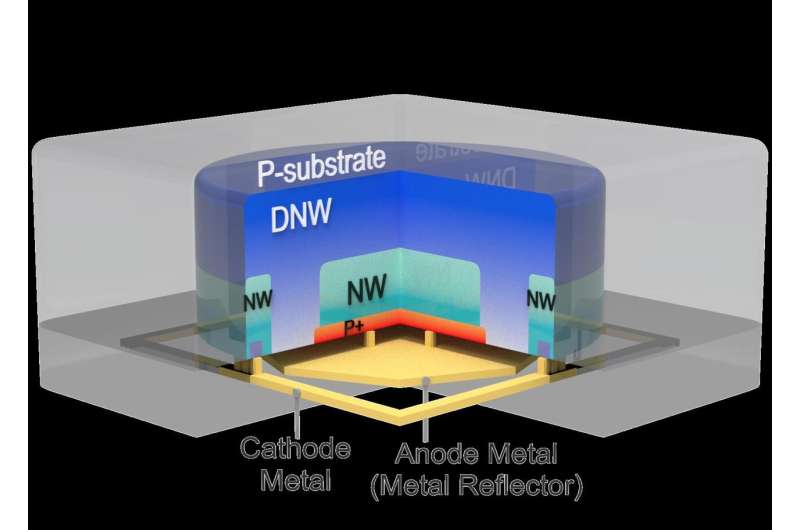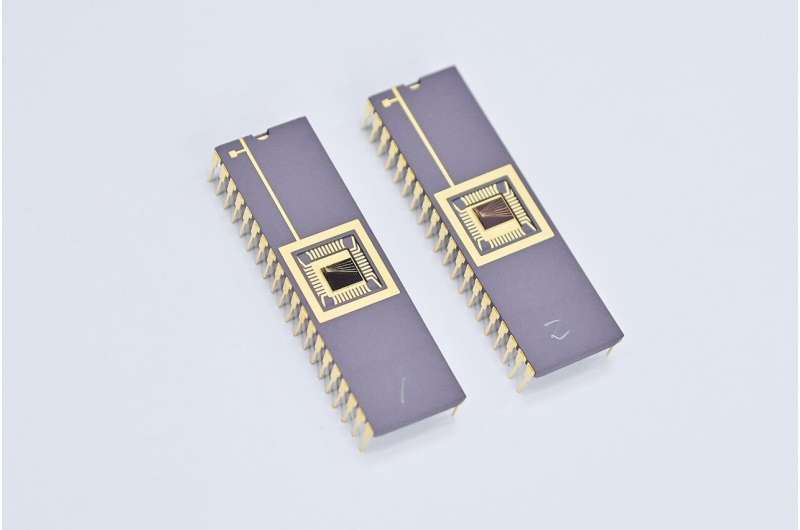This article has been reviewed according to Science X's editorial process and policies. Editors have highlighted the following attributes while ensuring the content's credibility:
fact-checked
trusted source
proofread
Key LiDAR sensor elements for autonomous vehicles made with Korean technology

LiDAR sensors are indispensable for the realization of advanced technologies such as advanced driver assistance systems (ADAS), autonomous driving, and AR/VR. In particular, short- and mid-range LiDAR used in AR/VR devices and smartphones requires better distance (depth) resolution to detect the shape of a person or object more accurately, and so a single-photon detector with better timing jitter performance is required.
LiDAR measures distance and creates a 3D image by calculating the time it takes for a photon emitted by the transmitter to strike an object, reflect, and arrive back at the receiver. The slight difference in detection time that occurs when the single-photon detector at the receiver converts the light signal into an electrical signal is called "timing jitter," and the smaller the value of this jitter, the more accurately the object can be recognized.
The Korea Institute of Science and Technology (KIST) announced that a team led by Dr. Myung-Jae Lee at the Post-Silicon Semiconductor Institute has developed a "single-photon avalanche diode (SPAD)" that can identify objects at the mm level based on a 40nm back-illuminated CMOS image sensor process.
SPADs, which are ultra-high-performance sensor devices that can detect single photons, are extremely difficult to develop, and to date, only Sony of Japan has successfully commercialized SPAD-based LiDAR based on its 90nm back-illuminated CMOS image sensor process and supplied it to Apple products.

Sony's SPAD shows better efficiency than back-illuminated SPADs reported in the literature, but its timing-jitter performance of about 137~222ps is insufficient to realize user discrimination, gesture recognition, and accurate shape recognition of objects required in short- and mid-range LiDAR applications.
The single-photon sensor element developed by KIST has significantly improved the timing-jitter performance by more than two times to 56ps, and the distance resolution has also been improved to about 8mm, which has great potential for utilization as a short and mid-range LiDAR sensor element. In particular, since the SPAD was developed based on the 40nm back-illuminated CMOS image sensor process, a semiconductor process for mass production, through joint research with SK hynix, it is expected to be immediately localized and commercialized.
"If commercialized as a core source technology for semiconductor LiDAR and 3D image sensors, it will greatly enhance our competitiveness in next-generation system semiconductors, which are Korea's strategic industries," said Myung-Jae Lee, principal investigator at KIST.





















